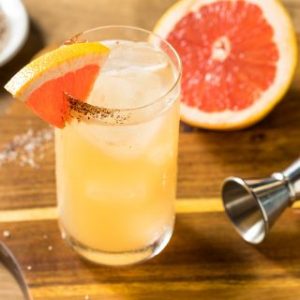Beers described as “alcohol-free” and “low-alcohol” will be allowed to be stronger under plans designed to tempt drinkers into switching to healthier alternatives.
Source: The Times UK.
A relaxation of alcohol by volume (ABV) limits covering the products is awaiting sign-off by the next prime minister.
At present “no alcohol” beer must contain less than 0.05 per cent ABVand “low alcohol” less than 1.2 per cent.
These limits could be increased to between 0.5 and 1 per cent and up to about 3 per cent respectively.
The shift in policy is designed to help people cut down on their alcohol intake by helping brewers make low-strength options more appealing.

Ministers believe encouraging people to opt for weaker beers will improve health by reducing alcohol consumption without attracting accusations of “nanny-state” restrictions on freedom.
The plans were days away from being published as part of a health disparities white paper drawn up by Sajid Javid before he quit as health secretary.
When Boris Johnson resigned as prime minister, the paper was paused until his replacement takes office in early September.
However, neither the Treasury under Rishi Sunak nor the Foreign Office under Liz Truss raised objections when they were sent for approval by ministers before being formally signed off by the government.
Sir Chris Whitty, the chief medical officer, is said to be pushing the policy within government.
While the promotion of lower-alcohol drinks has been welcomed by industry, health campaigners say it is “tinkering round the edges” and only restrictions on advertising and price are likely to cut consumption significantly.
Javid’s white paper was set to disappoint health campaigners, as it planned a “market-based approach to reducing obesity” based on an industry taskforce. It was also due to reject the recommendation from a government review that the legal smoking age be raised every year.


Instead, it would have promised “a revolution in the use of vaping” that would lead to e-cigarettes being prescribed on the NHS.
On drinking, it set out to reduce consumption and “encourage the switch to alcohol-free and low-alcohol alternatives”.
“Getting the alcohol down really low makes it much harder to make products that people like so, if you can promote better alcohol-free and low-alcohol drinks, that makes people more likely to switch from standard beers,” a health source claimed.
Consumers have increasingly been moving towards lower-alcohol drinks. The market doubled over a five-year period to an estimated £171 million in sales last year.
Figures from the market research company Mintel show that more than a third of drinkers say there are not enough low-alcohol and alcohol-free beers available in pubs and bars.
Tom Stainer, chief executive of the Campaign for Real Ale, said: “Whereas five to ten years ago most consumers had very little choice in the low-alcohol section, today we are seeing some incredible initiative and innovation in the sector.”
He said that any beer up to 3.5 per cent ABV should be classified as low alcohol, adding: “We believe this would make low-alcohol beers more attractive to consumers at the bar, encouraging consumption of lower-strength beers and improving consumer choice.
“The government’s policy aim of encouraging the growth of the consumption of low-strength beers is severely undermined by the existing labelling regulation, which prevents brewers promoting low-strength beers as low strength.”
Stainer claimed that this was “out of step with the forthcoming changes to the alcohol duty regime”, which will reduce tax on beer of 2.8 per cent ABV or under – far higher than the current definition of low-alcohol.
Professor Sir Ian Gilmore, chairman of the Alcohol Health Alliance of doctors and charities, suggested that more evidence was needed on low-alcohol products but said “if it could be done in a way without brand promotion, we would be supportive”.
We do support people switching to lower-strength drinks [but] firms are often using the same branding and we’ve got real concerns that they’re using ‘low alcohol’ with exactly the same branding [as full-strength products] and it could be a route in for children and young people to use alcohol.
Professor Sir Ian Gilmore
Gilmore said the plan was “tinkering round the edges” and that the government had “consistently put its head in the sand on evidence-based policies that have been shown worldwide to reduce harm”, chiefly by increasing prices and reducing availability.
While younger people are drinking less than in the past, those in middle age are increasingly drinking unhealthy amounts. Gilmore said a minimum unit price in Scotland had reduced harm caused by alcohol and expressed frustration that “this ‘nanny state’ argument comes up again and again”.
You may also be interested in reading: Innovators in no / low-alcohol aim to build on the category’s success in the US.




